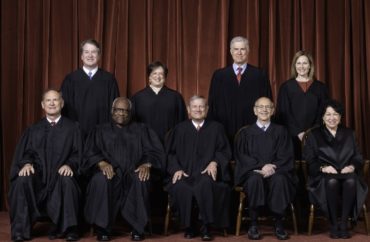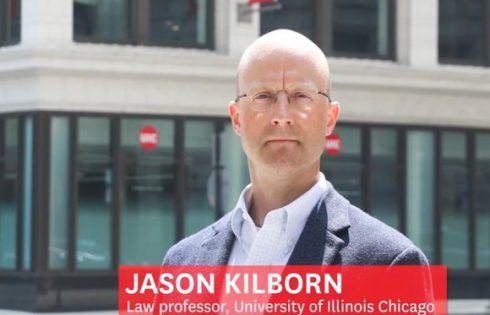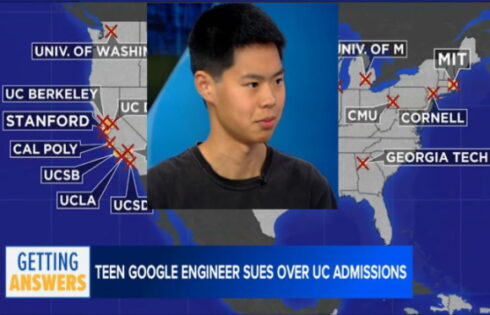
Justice Clarence Thomas would be the first judge forced into retirement, if approved
A group of legal scholars that represent different political philosophies drafted a proposal to amend the Constitution to put term limits on Supreme Court justices, as part of a project by the National Constitution Center.
The scholars represented liberal, libertarian and conservative philosophies and released the details on the amendment last week.
“There shall be nine judges of the Supreme Court, who shall hold their offices for staggered terms of eighteen years, such that every two years there shall be a vacancy,” according to a copy of the amendment provided to The College Fix.
If approved, judges who run their term until expiration will be permitted to serve in an inferior court.
In terms of a death, resignation, or impeachment of a Supreme Court Justice, a “new judge shall be appointed for the duration of the term only.”
The Fix spoke to Ilan Wurman of Arizona State University, who served as the leader of “Team Conservative” for the exercise. The other two team leaders were Ilya Shapiro, formerly of Georgetown University, and Caroline Fredrickson of Georgetown University, serving as the leaders of “Team Libertarian” and “Team Progressive,” respectively.
Professor Wurman spoke with The Fix via email about the conservative perspective of the proposed amendment.
“At the end of the day, this proposed amendment is a compromise,” Wurman told The Fix. “Although conservatives like the current crop of justices and most wouldn’t mind having them serve for life, there is always the risk of court packing.”
“Court-packing may seem politically explosive today, but it might not be in ten years. So the trade-off here is that conservatives get to ‘fix’ the number of justices at nine, whereas progressives get some degree of term limits,” he said.
MORE: Georgetown Law professor says Americans are ‘slaves’ to Constitution
When asked how the amendment would affect the neutrality of lack thereof of the amendment, Wurman said that it would be difficult to predict.
“It’s actually hard to predict the effect staggered term limits would have on justices. It won’t necessarily make them more politically neutral,” he said. “But it will reduce the temperature of confirmation battles because there’d be no more strategically timed retirements and it would limit the consequences of unexpected deaths.”
Hypothetically, if the proposed amendment was passed and put into effect in 2023, Republican appointed judges would be the first to take a hit.
“After this article is ratified, the senior-most judge currently serving on the supreme court, calculated by time served on the court, shall retire by the next presidential inauguration,” the amendment stated. “The President after said inauguration shall nominate a successor. Every two years thereafter for sixteen years, the most senior remaining judge shall retire by January 20, whose successor shall be nominated by the sitting President after that date.”
Justice Clarence Thomas would be the first to be forced into retirement, having served the longest of the nine justices at 31 years.
The 2024 presidential winner would then be in charge of nominating a judge to fill Thomas’ seat if the amendment passed before then.. If the United States’ next president is a Democrat, the Supreme Court would shift to a 5-4 split. However, if Americans elect a Republican president, the high court would most likely stay at a 6-3 split.
The next two judges to go, also appointed by President George W. Bush, would be Chief Justice John Roberts and Justice Samuel Alito.
The Fix asked Shapiro and Frederickson how the amendments would advance their respective political philosophies, but neither responded in the past week.
“It’s so meaningful that three teams of scholars of different perspectives were able to agree on five proposed amendments to the Constitution,” Jeffrey Rosen, president and CEO of the National Constitution Center, told The Fix through a media representative. “The surprising consensus of the NCC’s virtual Constitutional Convention is a tribute to the possibilities for Madisonian deliberation and compromise in a polarized age.”
MORE: Law professors debate constitutionality of wealth tax
IMAGE: Supreme Court
Like The College Fix on Facebook / Follow us on Twitter






Please join the conversation about our stories on Facebook, Twitter, Instagram, Reddit, MeWe, Rumble, Gab, Minds and Gettr.